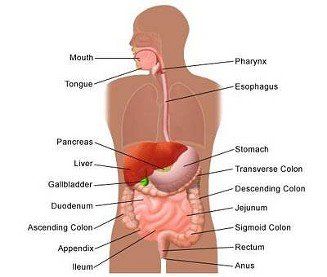
Get the very best in pancreatic care
For patients who have or are suspected of having pancreatic disease, the doctor may recommend them to undergo a type of procedure called an endoscopic ultrasound more often known as EUS.
An EUS is a type of endoscopic examination which involves the insertion of a thin tube into the mouth and down into the stomach and the first part of the small intestine. At the tip of the tube is a small ultrasound probe that emits sound waves and will allow the doctor to obtain detailed images and information about the digestive tract and the surrounding tissue and organs, including the lungs.
The doctor will observe the inside of the intestinal tract on a TV monitor and the ultrasound image on another monitor. Additionally the sound wave testing may be used to locate and help take biopsies (small piece of tissue to examine by microscope).
Reasons for getting an EUS:
- Pancreatic masses and tumors
- Pancreatic cysts
- Chronic pancreatitis
- Autoimmune pancreatitis
- Acute pancreatitis

Frequently asked questions:
Q. Can biopsies of the pancreas be taken at the time of my EUS?
A. One of the advantages of performing an EUS is that pancreatic biopsies can be obtained at the time of the examination. It can be used to obtain a needle biopsy of the pancreas or to sample fluid in a pancreatic cyst by passing a very thin needle from the endoscope into the pancreas under continuous ultrasound monitoring. This technique is called EUS-fine needle aspiration (EUS-FNA) and does not hurt.
Q. What are the advantages of an EUS, compared to a CT scan, MRI, or ERCP?
A. There are many different tests which can be used to evaluate the pancreas. However some patients are unable to receive IV contrast for their CT scans (due to allergies or kidney problems), and thus the quality of the pictures will be sub-optimal. EUS allows the physician to get in very close proximity to the pancreas, which results in very detailed imaging of the organ. The endoscopist can often times visualize details of the pancreas that cannot be seen with either CT or MRCP.
Q. Are there any risks of having an EUS?
A. Risk of a severe complication like from EUS is very low, less than 1% of the time in most cases.
- Cardiac and/or pulmonary complications during an EUS procedure because of sedation.
- Small risk of causing bleeding or a tear of the GI tract (called a perforation)
- Bleeding, infection, or acute inflammation of the (physician may give you an antibiotic during the procedure to prevent infection, and may prescribe a short course of oral antibiotics after the procedure.)
Q.How should I prepare for my EUS?
A. You should not have anything to eat or drink for approximately 8 hours before your EUS. Patients are asked to refrain from eating or drinking after midnight the night before their test.
Q.What should I expect on the day of my EUS?
A. On the day of your EUS, you will arrive in the endoscopy suite, an IV will be inserted to allow administration of fluids and sedatives. Sedatives will be injected into your IV before the procedure begins. The physician will then insert the endoscope through either the mouth or rectum, observing both the endoscopic and ultrasound images on a nearby monitor. A biopsy (FNA) will be performed, if necessary. Before you are discharged home, you will have an opportunity to meet with your physician to discuss the results of the EUS, and receive further instructions regarding your medications.
Apply the technology of endoscopy for a healthier and more fulfilling life.
Our team of gastroenterology specialists will ensure you feel safe and comfortable throughout the endoscopy test.
Take the first step in lowering your risk of pre-cancerous and cancerous conditions by setting up an appointment with our clinic.
Hemet
951-929-1177
Murrieta
951-672-7885
Sun City
951-304-3900
